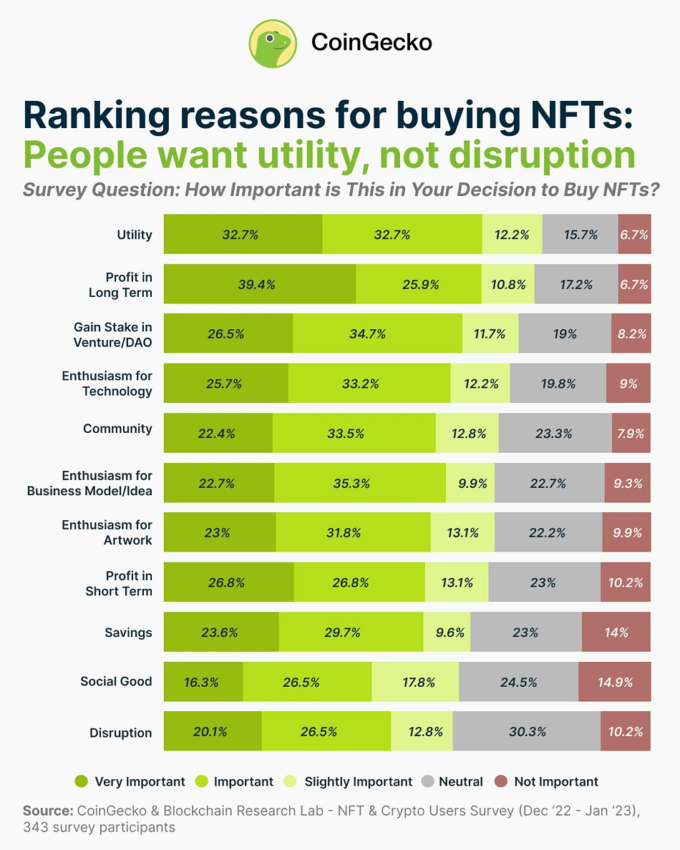Non-fungible tokens (NFTs) are a fleeting trend and a gateway for creators to unlock a range of special features. This vision transcends the initial euphoria surrounding NFTs as the only digital collectibles. As a result, we are steering towards a horizon where functionality and usability prevail.
This evolution in the NFT market is championed by industry experts who believe that when designed with a focus on utility, NFTs can dramatically improve user engagement and community building.
NFTs as utility tokens
The essence of NFTs as keys lies in their unique digital DNA. Each token is a separate entity, a unique point in the digital continuum that can be programmed to grant access, unlock experiences, or reveal special functionality within a virtual ecosystem.
This is not just a theoretical concept, but a lived reality on platforms like Mintable. Here, NFTs provide the passport to exclusive digital domains, increasing user engagement and the inherent value proposition of the digital asset.
This utilitarian ethos of NFTs is a boon for creators and opens the gates to new monetization strategies. Beyond the initial sale, the narrative of exclusivity surrounding NFTs can be a perpetual source of revenue. Additionally, the secondary market allows creators to earn royalties on every change in ownership, creating a sustainable financial model.
“Of the eleven key factors to consider, NFT usefulness is the most important reason to motivate people to buy, while breaking the status quo is the least important reason… At least three in four NFT holders are considering how much utility a collection provides or what benefits they can gain by holding it before purchasing it,” CoinGecko reported.

Why Investors Buy NFTs. Source: CoinGecko
Ronny Dahan, CEO of SIRKL.io, told BeInCrypto about the potential of additional capabilities such as paid groups or on-chain storage features that provide additional layers of value to NFTs.
“NFT makers should take an approach that focuses on long-term utility, rather than focusing solely on short-term hype. Smart contracts offer unique opportunities to create NFTs with real utility, such as fractional ownership, access to exclusive content, or community management. These integrations demonstrate how utility can significantly increase the value of NFTs while strengthening engagement and satisfaction among NFT holders,” Dahan said.
Read more: NFT Marketing: A Guide to Promoting Non-Fungible Tokens
Community and investor involvement is the foundation of this evolving story. An engaged community is not just a temporary audience, but a co-creator of value.
The dialogue between creators and the community, catalyzed by open communication and active listening, fosters a robust ecosystem around NFT projects.
“68.8% of NFT holders are purchasing because they want to join the community of co-owners and the project team. For blue chip or emerging projects, this could mean becoming part of a prestigious network that can elevate the owners’ social status or grant access to exclusive resources. Additionally, people may be attracted to NFT communities that share similar interests or values, or where they happen to find new friends,” CoinGecko concluded.

Google Search Interest in NFTs. Source: Statista
Dahan also underscored the importance of community involvement, portraying it as the cornerstone of success and continued interest in NFT efforts.
“In a volatile market like NFTs, responsiveness is critical. It is critical to stay abreast of trends, listen to the community, and iterate on the project accordingly. You must continually assess user feedback and adjust features to stay relevant. Furthermore, strategic partnerships and open communication with the community can help manage market fluctuations, ensuring continued interest and value retention in our NFTs,” Dahan added.
Environmentally friendly and safety
Amid this digital renaissance, the specter of environmental impact looms. The carbon footprint of blockchain activities is a pressing concern, driving creators towards environmentally friendly blockchains.
This green ethos narrative that explores opportunities to reduce environmental impact could improve the reputation and perceived value of NFTs.
“Creators can minimize their carbon footprint by choosing environmentally friendly blockchains. Indeed, investor perception can be influenced by environmental concerns, valuing eco-friendly NFTs more and aligning projects with society’s growing environmental values,” Dahan points out.
The journey of NFTs from a digital novelty to a functional asset is a long-term vision. Indeed, it is a mix of real utility, continuous iteration based on feedback and strategic collaborations.
Dahan’s mantra is to prioritize real utility, engage the community from the start, and take a feedback-driven iteration approach.
Read more: 10 Best NFT Marketing Agencies to Promote Your Digital Art
Ensuring authenticity and preventing fraud are also paramount in this digital odyssey. Blockchain technology ensures the traceability and uniqueness of NFTs and provides a bulwark against fraud.
Still, Dahan vows for rigorous verification and education to advocate for a safe and authentic NFT industry.
“Raising awareness and educating our community about fraud risks are essential to maintaining a safe environment for our users and NFT projects. While blockchain technology provides traceability and uniqueness for NFTs, it is essential to implement verification processes and partner with reputable platforms to ensure the security of NFTs,” concluded Dahan.
The NFT space is ripe for maturity, with a greater focus on utility, sustainability and community-driven initiatives. Dahan’s outlook is optimistic, envisioning a market where environmental issues are addressed and technological advancements propel NFTs into the broader digital consciousness.

